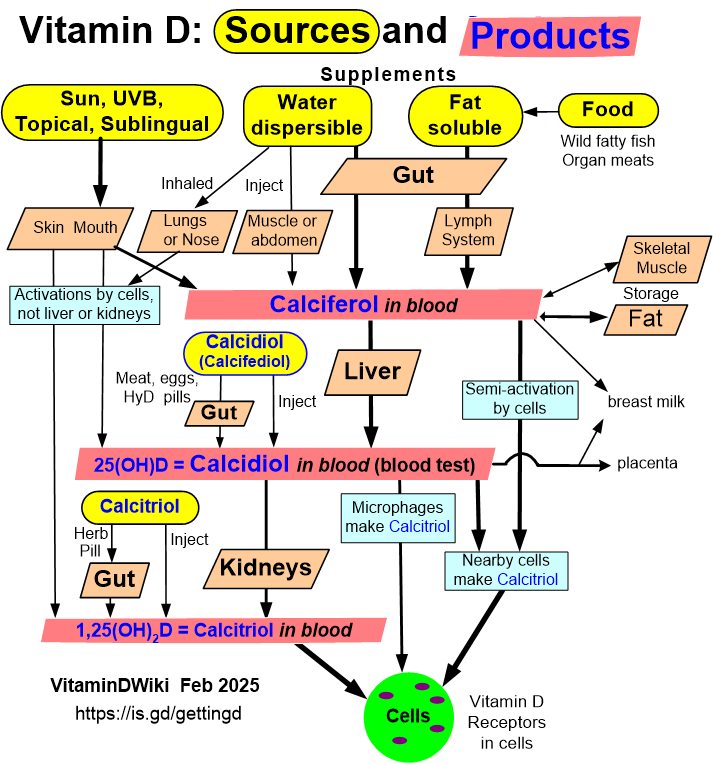People with poor guts getting nutrition via IV had poor oral Vitamin D bio-availability
The Prevalence of Vitamin D Insufficiency and Deficiency and Their Relationship with Bone Mineral Density and Fracture Risk in Adults Receiving Long-Term Home Parenteral Nutrition
Nutrients 2017, 9(5), 481; doi:10.3390/nu9050481
 1. Overview Gut and vitamin D contains the following summary{include} 1. Gut category listing contains the following{include}
1. Overview Gut and vitamin D contains the following summary{include} 1. Gut category listing contains the following{include}📄 Download the PDF from Vitamin D Life
Indications for HPN, %
| ** | ||
|---|---|---|
| Short bowel syndrome | 61 % | |
| - Crohn’s disease | 53 % | |
| - Bowel ischemia | 29 % | |
| - Bowel atresia 1 | 3% | |
| - Other short bowel | 16% | |
| Mucosal defect | 6 % | |
| Motility disorder | 11 % | ** |
Navaporn Napartivaumnuay 1,* and Leah Gramlich 1,2
1 Department of Medicine, University of Alberta, Edmonton, AB T6G 2R3, Canada
2 Nutrition Services, Alberta Health Services, Edmonton, AB T5J 3E4, Canada
(This article belongs to the Special Issue Parenteral Nutrition 2016)
It has been demonstrated that low bone mass and vitamin D deficiency occur in adult patients receiving home parenteral nutrition (HPN). The aim of this study is to determine the prevalence of vitamin D insufficiency and deficiency and its relationship with bone mineral density (BMD) and fracture risk in long-term HPN patients.
Methods: A retrospective chart review of all 186 patients in the HPN registry followed by the Northern Alberta Home Parenteral Nutrition Program receiving HPN therapy >6 months with a 25 (OH) D level and BMD reported were studied.
Results: The mean age at the initiation of HPN was 53.8 (20–79) years and 23 (37%) were male. The mean HPN duration was 56 (6–323) months and the most common diagnosis was short bowel syndrome. Based on a total of 186 patients, 62 patients were categorized based on serum vitamin D status as follows: 1 (24.2%) sufficient, 31 (50%) insufficient and 16 (25.8%) deficient. Despite an average of 1891 IU/day orally and 181 IU/day intravenously vitamin D, the mean vitamin D level was 25.6 ng/mL (insufficiency) and 26.2 ± 11.9 ng/mL in patients with the highest 10-year fracture risk.
Conclusion: Suboptimal vitamin D levels are common among patients on long-term HPN despite nutrient intake that should meet requirements.
